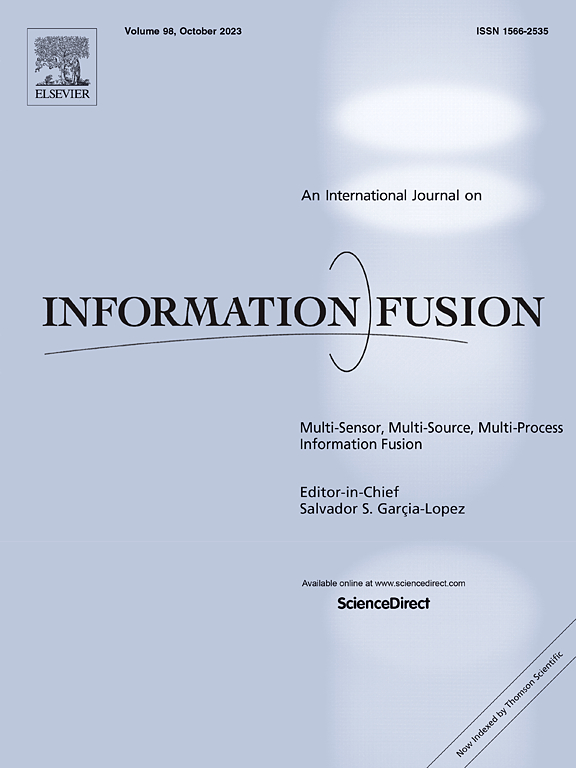CDF-DSR: Learning continuous depth field for self-supervised RGB-guided depth map super resolution
IF 14.7
1区 计算机科学
Q1 COMPUTER SCIENCE, ARTIFICIAL INTELLIGENCE
引用次数: 0
Abstract
RGB-guided depth map super-resolution (GDSR) is a pivotal multimodal fusion task aimed at enhancing low-resolution (LR) depth maps using corresponding high-resolution (HR) RGB images as guidance. Existing approaches largely rely on supervised deep learning techniques, which are often hampered by limited generalization capabilities due to the challenges in collecting varied RGB-D datasets. To address this, we introduce a novel self-supervised paradigm that achieves depth map super-resolution utilizing just a single RGB-D sample, without any additional training data. Considering that scene depths are typically continuous, the proposed method conceptualizes the GDSR task as reconstructing a continuous depth field for each RGB-D sample. The depth field is represented as a neural network-based mapping from image coordinates to depth values, and optimized by leveraging the available HR RGB image and the LR depth map. Meanwhile, a novel cross-modal geometric consistency loss is proposed to enhance the detail accuracy of the depth field. Experimental results across multiple datasets demonstrate that the proposed method offers superior generalization compared to state-of-the-art GDSR methods and shows remarkable performance in practical applications. The test code is available at:CDF-DSR:学习连续深度场的自监督rgb引导深度图超分辨率
RGB引导深度图超分辨率(GDSR)是一项关键的多模态融合任务,旨在利用相应的高分辨率(HR) RGB图像作为引导增强低分辨率(LR)深度图。现有的方法主要依赖于有监督的深度学习技术,由于收集各种RGB-D数据集的挑战,这些技术往往受到泛化能力有限的阻碍。为了解决这个问题,我们引入了一种新的自监督范式,该范式仅利用单个RGB-D样本实现深度图超分辨率,而无需任何额外的训练数据。考虑到场景深度通常是连续的,本文提出的方法将GDSR任务定义为为每个RGB-D样本重建一个连续的深度场。深度场表示为基于神经网络的从图像坐标到深度值的映射,并通过利用可用的HR RGB图像和LR深度图进行优化。同时,提出了一种新的跨模态几何一致性损失来提高深度场的细节精度。跨多个数据集的实验结果表明,与目前最先进的GDSR方法相比,该方法具有更好的泛化能力,在实际应用中表现出显著的性能。测试代码可从https://github.com/zsy950116/CDF-DSR获得。
本文章由计算机程序翻译,如有差异,请以英文原文为准。
求助全文
约1分钟内获得全文
求助全文
来源期刊

Information Fusion
工程技术-计算机:理论方法
CiteScore
33.20
自引率
4.30%
发文量
161
审稿时长
7.9 months
期刊介绍:
Information Fusion serves as a central platform for showcasing advancements in multi-sensor, multi-source, multi-process information fusion, fostering collaboration among diverse disciplines driving its progress. It is the leading outlet for sharing research and development in this field, focusing on architectures, algorithms, and applications. Papers dealing with fundamental theoretical analyses as well as those demonstrating their application to real-world problems will be welcome.
 求助内容:
求助内容: 应助结果提醒方式:
应助结果提醒方式:


